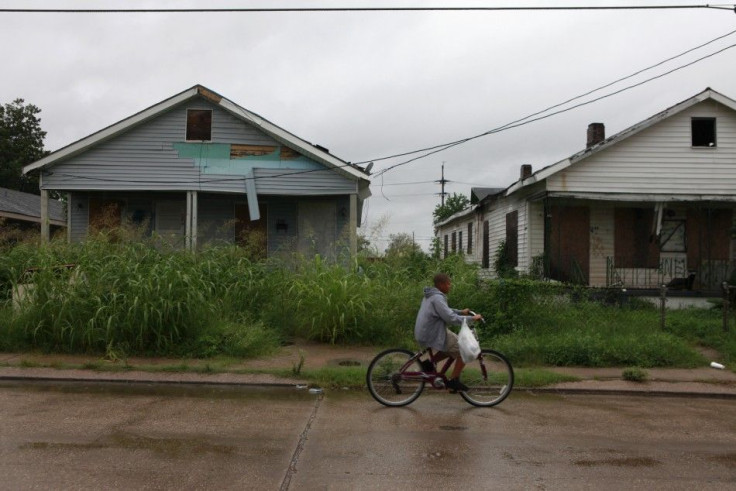‘Katrina Tours’ Irking Some N. Orleans Residents

In the weeks after Hurricane Katrina walloped New Orleans, residents of the Lower 9th Ward began to notice a new crop of people wandering through their debris-strewn streets. They weren’t relief workers or returning residents. They weren’t even journalists. These strangers coming in by the bus-full, it turns out, were paying tourists exploring the neighborhood on a so-called Katrina tour.
The City Council quickly approved an ordinance in 2006 banning the tour groups from crossing the Industrial Canal and entering the besieged neighborhood. Residents, the council said, had complained of strangers walking on their properties and even taking items as souvenirs.
The ordinance, however, went largely unenforced until City Councilman Ernest F. Charbonnet took office two months ago. Charbonnet represents the neighborhood and said he took action against the tours after numerous residents came to him with complaints.
“The buses are huge, the houses shake, there are broken roads, and it causes traffic problems because they stop whenever they feel like it,” he said. “And some are weary of their privacy being invaded. They’re tired of being gawked at like they’re sideshow animals in a zoo. It has a humiliating aspect.”
So, Charbonnet decided to make sure the ordinance was enforced and began prompting officials to stop and fine the buses -- a sudden about-face that has irked the tour operators and forced many to temporarily cancel their Katrina Tours (excursions, they say, bring much-needed tourism dollars into New Orleans).
Gray Line pioneered the idea back in February 2006, though some 30 companies now ply a reborn neighborhood, replete with houses built by Brad Pitt’s Make It Right foundation, rock ‘n roll star Fats Domino’s house and a nearby Musicians Village conceived by entertainers Branford Marsalis and Harry Connick Jr.
Adrienne Thomas, manager of Gray Line New Orleans, explained that staff members who were affected by Katrina were the catalyst for the initial trips.
"They wanted people to understand what had happened, beginning with their own stories," she said. "They had no desire or intent to exploit, only to share and try to explain."
Kelly Schultz of the New Orleans Convention and Visitors Bureau said her organization is often questioned about the Katrina tours.
“In the months and days after Katrina, we had mixed feelings,” she said. “On one hand, we liked these tours because they kept companies in business and showed people how the city is laid out, helping visitors put into perspective geographically where the Katrina damage was.”
But she said there was also a need to be sensitive to the city’s residents.
“It is emotionally draining to be a victim of Katrina and have tour buses going by. There was a balance, and there still is a balance, between being sensitive to residents, but also respecting the wishes of visitors who want to come to see the city, see the devastation, and come and help.”
Just as people go to New York City to see the World Trade Center, she added, others are drawn by human nature to New Orleans and its Katrina-battered Lower 9th Ward.
Charbonnet, too, understands that a balance must be struck between the tour operators and the residents of the Lower 9th Ward. He’s called a meeting for Friday afternoon in his office where he’ll propose the use of smaller buses, a more defined route and more partnerships.
“If we can have an agreement with the residents and tour companies, we can keep this going,” he said. “I am confident that this can be done.”
© Copyright IBTimes 2024. All rights reserved.








